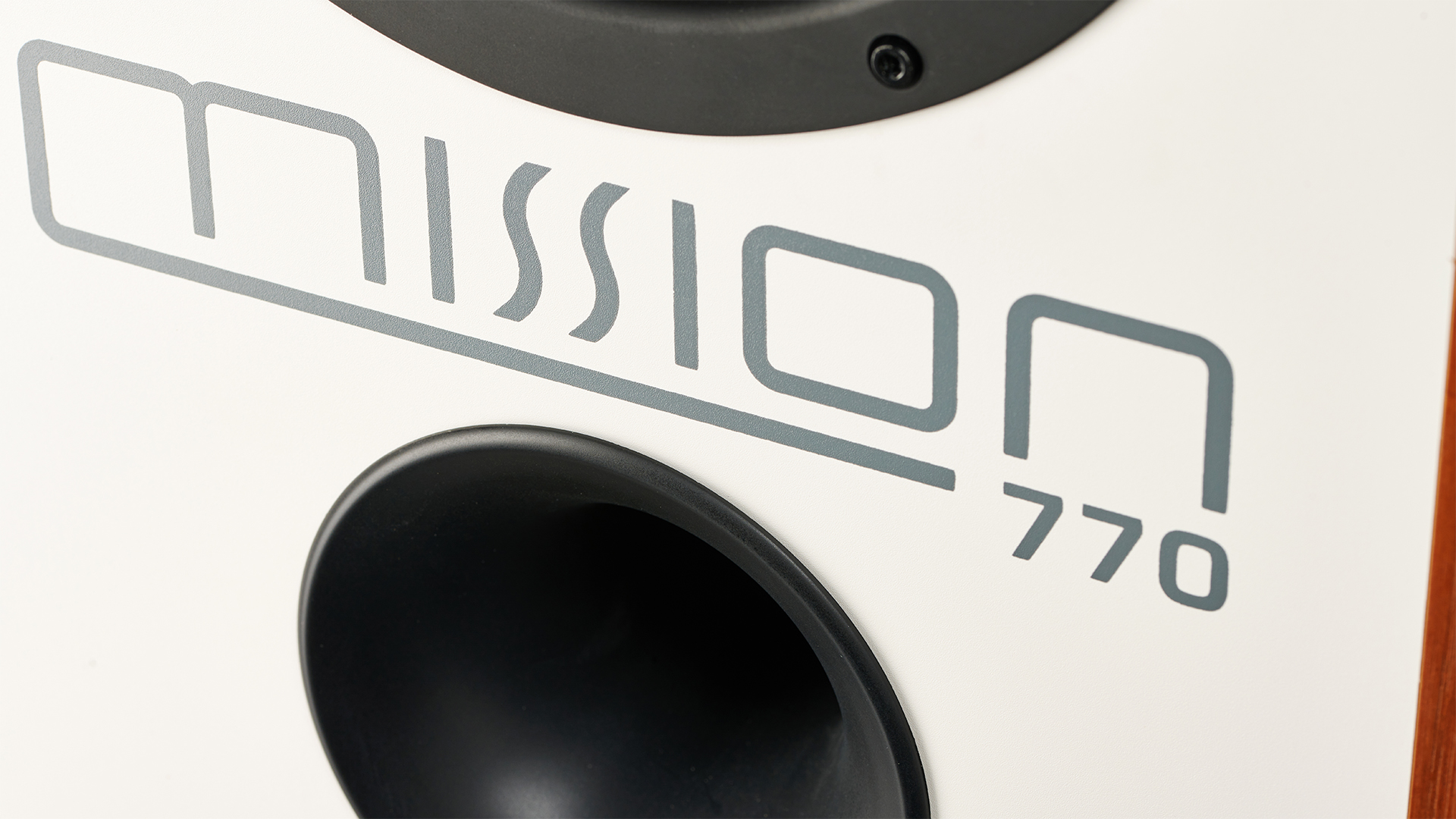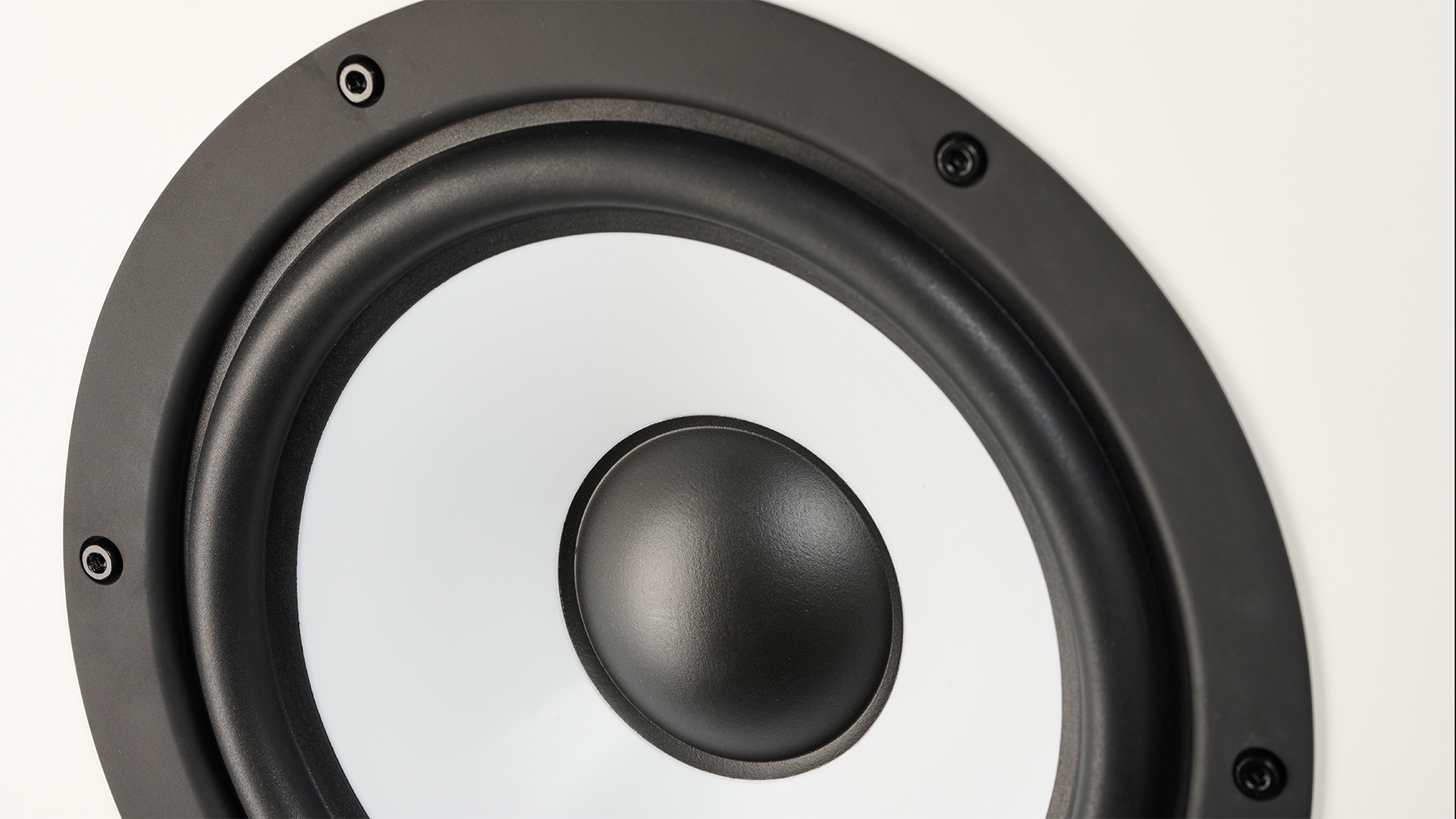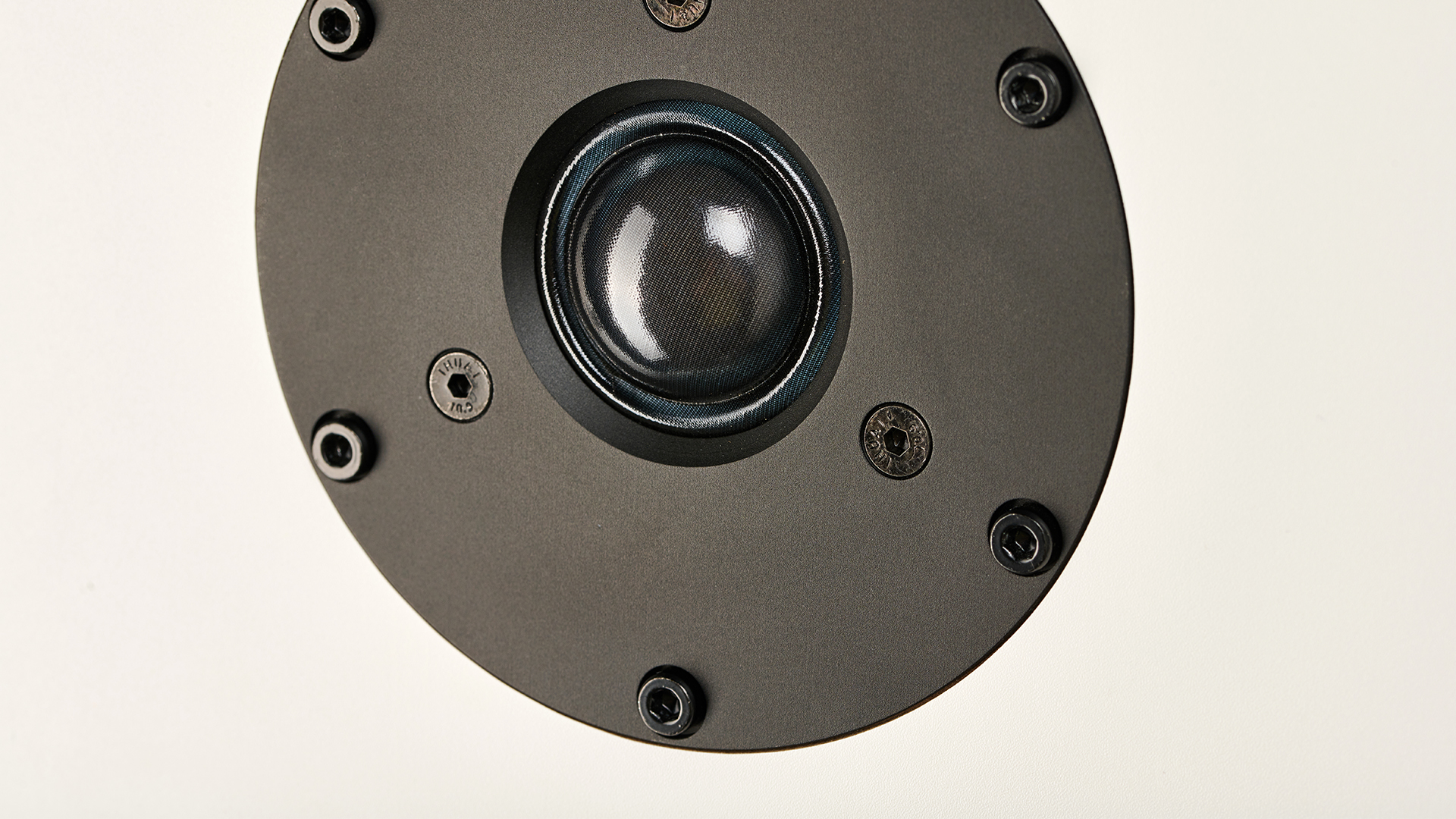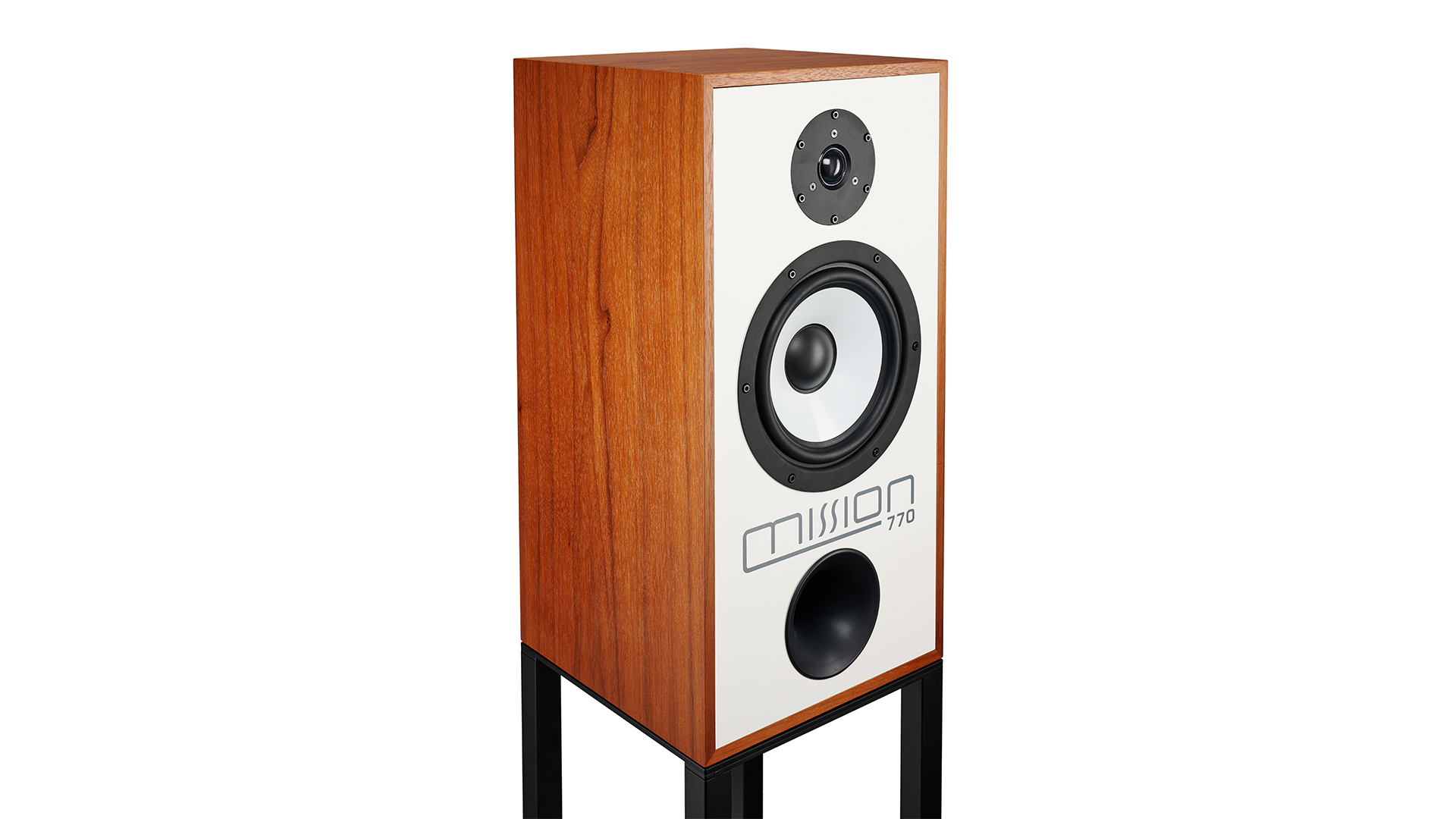What Hi-Fi? Verdict
No need for rose-tinted glasses here. Mission’s resurrected 770 offer an excellent alternative to the established class leaders
Pros
- +
Articulate and insightful performance
- +
Impressive bass clarity
- +
Dedicated stands included in price
Cons
- -
Big and wide by current standards
Why you can trust What Hi-Fi?
We love classic old hi-fi. Give us a chance to hear an original pair of Quad ESL-57 electrostatic speakers, Krell’s first power amplifier, the KSA 100, or an early Linn LP12 and we simply wouldn’t be able to resist. A huge part of the appeal of these products is all about nostalgia, of course. Compared to the very best we can make today, each of this legendary trio would struggle, though it’s important to note that they would still charm due to their innate specialness.
But what if you take such a classic design as a base, and then execute it with the full might of current technology and the benefit of improved technical knowledge gained over the decades? This is something that JBL has already managed to do with the excellent L100 Classic and it’s a formula that Mission has followed with the resurrected 770 we have on test here. The company has even gone so far as to make these speakers at a new manufacturing facility in the UK to emphasise the heritage angle, rather than build in China alongside the rest of the range.
Build

The original 770 were launched back in the late 1970s. They were hugely successful and instrumental in establishing the then-fledgling speaker brand in the market. The story goes that Mission’s founder, Farad Azima, was hugely impressed by Spendor’s BC-1 monitor but wanted a more upbeat and involving sound. The 770 were the result – a large two-way standmounter with a 20cm polypropylene mid/bass unit mated to a 25mm plastic dome tweeter through a relatively simple crossover. The cabinet was made of heavily damped chipboard, echoing the BBC-inspired thin wall construction of the Spendor.
Mission has been far more faithful than JBL about sticking to the original version’s appearance, right down to the white front baffle with its distinctive and rather unsubtle branding between the mid/bass unit and port. Look at the two 770 generations side by side and the resemblance is unmistakable, but that doesn’t mean that Mission hasn’t taken every opportunity to improve things.
For starters, rather than go for the BBC-inspired route of cabinet design, Mission has chosen a more modern approach by making the speaker panels a twin-wall sandwich of high-density MDF and particleboard, bonded by a layer of what the company describes as ‘damping’ glue. The idea is that the two layers help to control each other’s resonances and together (with the glue, of course) form a rigid structure. This method of construction should avoid the excess richness and slightly loose bass that can often result when using the traditional BBC method.

Type Two-way standmounter
Enclosure type Front ported
Tweeter 28mm soft dome
Mid/bass 20cm mineral-loaded polypropylene cone
Sensitivity 88dB/W/m
Nominal impedance 8ohms (minimum 6 ohms)
Dimensions (hwd) 590 x 300 x 300mm
While Mission has stuck with the same size of polypropylene mid/bass cone as the original, the one used in this new generation is a thoroughly modern design with an open, rigid die-cast chassis and carefully honed motor system. The polypropylene cone, coloured white just like in the original, is mineral-loaded and carefully shaped to aid rigidity. This cone is then married to a low-density nitrile surround to control any resonances. The tools available to a speaker designer to optimise performance are so much more sophisticated than they were back in the original’s heyday that it’s easy to understand how the current drive units could easily outperform their ancestors.
The same applies to the 28mm microfibre Polyester dome tweeter, which is a modern vented design that’s linked to the mid/bass via a more complex crossover than before. The crossover point is set at a fairly conventional 2.9kHz. Connection is through a single pair of chunky speaker terminals.
The latest hi-fi, home cinema and tech news, reviews, buying advice and deals, direct to your inbox.
The performance of any standmounter is reliant on the quality of its support, so we’re pleased to report that Mission has taken things seriously and designed dedicated stands for the new 770. Even more pleasingly, these are included in the package when you buy the speakers. That’s a good thing, as these standmounters are an unusual size by current standards.
The 770 stands are a frame design made mostly of high carbon steel, with the uprights internally damped to control resonances. Once built – they come flat-packed – these supports feel solid and, as would be expected, fit the speakers perfectly. They position the tweeter at an ideal height for our listening position.
Compatibility

Any speaker at this level positively demands a top-class system, and these boxes are no different. The majority of our testing is carried out with our usual reference system of a Naim ND555/555 PS DR music streamer and Technics SL-1000R turntable, both feeding a Burmester 088/911 MkIII pre/power. We also plug in the Naim SuperNait 3 integrated to see how the Missions perform with a more price-compatible amplifier.
The Mission’s sensitivity is pretty good at 88dB/W/m, which when combined with an impedance that doesn’t dip below 6 ohms means that they should suit a wide range of amplifiers. In most circumstances, the partnering amplifier for these should be chosen on quality grounds rather than how many watts it produces.
Make no mistake, these are big standmounters by current standards. Their internal volume is 38.5 litres – around double that of most rivals. Add the fact that they sound best when given space to breathe and there’s certainly the potential for them to dominate in modestly sized rooms.
In our relatively spacious – 3m x 5m x 7m (hwl) – test room, these Missions sound best when placed around 75cm from the rear wall and well away from the sides. Angling them slightly towards the listening position helps to focus and solidify the stereo imaging, so that's something well worth doing.
Sound

As a general rule, big speakers with big drive units tend to produce big bass, and that holds true here. Mission claims a low-end response that extends to 30Hz in a room, which is well beyond what most rivals can manage.
But that’s not the aspect of the 770’s low-end performance that impresses us the most. We can’t recall a similarly priced standmounter that has as much finesse when it comes to delivering bass. As we listen to Massive Attack’s Angel, it’s the articulate way these speakers render the bass notes that stick in the mind. They sound taut and agile, but also delicate in the way they paint bass textures and resolve low-level information. It’s a balance that is a little leaner and drier in the bass than we expected, though not so much that it will prove an issue with system matching. Don’t worry, there’s plenty in the way of punch and power when required.
Move up the frequency range and we’re greeted by a clear, precise and expressive midrange. Mission’s best speakers have always had a brightly lit, slight forward balance in the midrange and these new speakers echo that. It gives the 770 a lively and engaging presentation that, in this case, is judged well enough never to sound thin or overly aggressive. That new soft dome tweeter isn’t the most detailed we’ve heard at this level but has enough in terms of refinement and bite to blend in nicely.

We move to Stravinsky’s The Rite Of Spring and the Missions sound right at home, delivering the music with impressive authority and scale. Of course, the extended low-end helps, but it’s also the 770’s wide-ranging dynamics and generally articulate nature that brings the music to life. It’s a musically cohesive presentation that’s controlled and nicely organised.
Rhythmically things are sure-footed, with the speakers able to communicate the often frantic drive of the symphony well. It’s a presentation that preserves the high octane energy of the music yet still manages to sound calm and composed. That holds true even at higher volumes where the 770 keep a firm grip on dynamic integrity and refinement.
We’re happy with the stereo imaging too. Once the speakers are placed with care we get a solid and spacious stereo image that’s pleasingly uncluttered. It’s layered and nicely focussed, though we notice that the 770 don’t quite disappear into the soundstage in the way the best of their smaller rivals manage. Pleasingly, the imaging remains stable even as the music becomes more demanding.
Verdict

Our conclusion? We think these new Mission 770 are right up there with the very best at this price. While the link to the past will be the main attraction for some, for us that’s put in the shade by the speakers' excellent all-round performance. The 770 have a range of sonic talents that sets them apart from most rivals and earns them a glowing recommendation.
First reviewed: August 2022. Updated review: November 2024.
SCORES
- Sound 5
- Build 5
- Compatibility 5
MORE:
Read our review of the Spendor Classic 2/3
Also consider the ProAc Response D2R
These are the best standmount speakers
How is an iconic speaker resurrected for the 21st century? We asked JBL, Wharfedale and more
What Hi-Fi?, founded in 1976, is the world's leading independent guide to buying and owning hi-fi and home entertainment products. Our comprehensive tests help you buy the very best for your money, with our advice sections giving you step-by-step information on how to get even more from your music and movies. Everything is tested by our dedicated team of in-house reviewers in our custom-built test rooms in London, Reading and Bath. Our coveted five-star rating and Awards are recognised all over the world as the ultimate seal of approval, so you can buy with absolute confidence.


